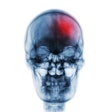Periodontal disease (PD) may be linked to cerebral small vessel disease (CSVD), a condition associated with an increased risk of stroke and cognitive decline. This study was recently published in Neurology Open Access.
Furthermore, PD may contribute to a higher white matter hyperintensity (WMH) burden, a key indicator of CSVD, possibly through systemic inflammation, the authors wrote.
“We report a significant and independent association between CSVD and PD,” wrote the authors, led by Dr. Jaclyn Meyer of the University of South Carolina School of Medicine (Neurol Open Access, October 22, 2025, Vol. 1:4, e000037).
The analysis used data from the Atherosclerosis Risk in Communities study, which began in 1987 with 15,792 participants ages 45 to 64 from four U.S. communities. Across 10 visits from 1987 to 2023, researchers collected participants’ medical, social, and medication histories, plus their blood pressure measurements, they wrote.
Participants were classified as having PD or periodontal health. CSVD features included WMH volume, cerebral microbleeds (CMBs), and lacunar infarcts, with WMH volume categorized into quartiles from MRI data. Logistic regression models, adjusted for demographic and vascular risk factors, examined associations between periodontal disease and these brain imaging markers.
Participants with PD had higher WMH volumes than those with periodontal health (median WMH%: 2.83 vs. 2.52; p = 0.012). PD was linked to the highest WMHV quartile (>21.36 cm³), with a crude odds ratio (OR) of 1.77 (95% confidence interval [CI], 1.23 to 2.56) and an adjusted OR of 1.56 (95% CI, 1.01 to 2.4), they wrote.
A weak but significant correlation was observed between WMHV and periodontal profile class (ρ = 0.076, p = 0.011), while no significant adjusted associations were found between PD and cerebral microbleeds (adjusted OR 1.16; 95% CI, 0.83 to 1.63) or lacunar infarcts (adjusted OR 1.14; 95% CI, 0.77 to 1.69).
However, the study had limitations. CSVD and PD were measured at different times; therefore, the changes in dental status between assessments may have been missed, the authors added.
“Further research is needed to examine whether the improvement in PD through proper oral hygiene can reduce the severity and/or the progression of CSVD and lead to a reduction in the risk of stroke and other morbidities that have been linked to CSVD,” Meyer and colleagues concluded.




















